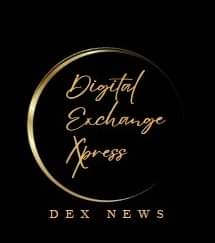ARTICLE AD BOX
We assembled 10 new year’s predictions for blockchain tech trends and developments, from the experts. They might be right.
A lot of blockchain developers probably feel like they’re working on the cutting edge of the cutting edge, building the financial and business infrastructure of the future. It’s nothing short of a revolution. Based on what we’ve seen, and reported, they’re not wrong.
Or, at least, it seems safe to say, the pace of innovation and speed of new developments in the blockchain space rarely ceases to stun; except for those moments when it all seems to look alike.
This year’s crypto-market doldrums brought little respite from the announcements, product rollouts, integrations, partnerships, collaborations, fundraisings, launches, deployments, migrations, transitions. There’s a lot of transformation, and information, all quite technical, complex; as hard as it can be to catch up, keeping up is equally daunting.
Imagine piloting a spaceship through a dense asteroid field while playing a game of Concentration with the individual asteroids; pattern recognition might be your only hope.
A few key 2023 trends were broadly foreseen by the experts. Many weren’t. Truth be told, nobody really knows where all of this is going. We curated 10 predictions from blockchain tech experts for 2024; their prognostications are as good as any, and quite technical. Bonne chance.
:format(jpg)/cloudfront-us-east-1.images.arcpublishing.com/coindesk/BJ5XIR2ASFHLFKYDS64EAGTYTE.jpg?resize=640%2C359&ssl=1)
:format(jpg)/cloudfront-us-east-1.images.arcpublishing.com/coindesk/BJ5XIR2ASFHLFKYDS64EAGTYTE.jpg?resize=640%2C359&ssl=1)
Interoperability
“By 2024 and beyond, the advancement of blockchain interoperability protocols will mark a major shift by breaking down the existing silos between different blockchains. This shift will enable diverse blockchain platforms to seamlessly interact by sharing data and value transfer, creating a unified and more efficient blockchain ecosystem.
The role of interoperability protocols will be crucial in this transformation, as they will increase innovation, as well as foster new applications and use cases, specifically in DeFi.” – David Schwartz, CTO, Ripple Labs.
Bitcoin fees
“In light of decreasing fixed block rewards for miners, our view is that catalysts for raising the variable block rewards from transaction fees will be increasingly important. The core Bitcoin protocol is in a largely stable state, with the Taproot upgrade in November 2021 being the only major protocol upgrade in the past five years – at least with regards to changes that have required a soft fork.
Thus, we believe usage catalysts will originate from technological innovation, mostly within the confines of the existing network protocol such as increased usage of blob data like Ordinals and Atomicals, elevated activity on secondary layer 2s like the Lightning Network (LN), or general smart-contract environments built on top of the Bitcoin network like Rootstock, Stacks, RGB or future implementations of BitVM.” – David Duong, head of institutional research, Coinbase.
Modularity
“We’ve also seen a consolidation on the modular thesis and exciting developments in this space as more and more hybrid solutions come to market such as Ethereum roll ups using Celestia as the data availability layer. Meanwhile we also have blockchains like Solana continuing in its monolithic direction and saying no to layer 2s because they view them as bad for liquidity and the user experience.
It will be interesting to watch these two narratives play out in 2024, especially as some Ethereum rollups explore using the Solana virtual machine.” – Abdelhamid Bakhta, lead and core Ethereum developer, Starknet ecosystem.
Zero-Knowledge Proofs
“SNARKs allow the computation of a ‘cryptographic receipt’ of some compute workload by an untrusted “prover” impossible to forge: In the past computing such a receipt cost 10’9 work overhead over the original compute; recent advances are bringing this number closer to 10^6. SNARKs therefore become viable in situations where the initial compute provider can bear a 10^6 overhead and the clients cannot re-execute or store initial data.
The use cases that result are many: Edge devices in the Internet of Things can verify upgrades. Media editing software can embed content authenticity and transformation data; while remixed memes could pay homage to initial sources. LLM inferences could include authenticity information. We could have self-verifying IRS forms, unforgeable bank audits, and many more uses that benefit consumers ahead.” – Sam Ragsdale, investment engineer, a16z.
Key management/user interfaces
“The emergence of account abstraction means that we can soon overcome the technical challenges of self-custody. 2024 will be the year that seed phrases can finally become a historical practice for most. The idea that the safety of assets meant having 12 words that you can never lose, but no one else can ever access, is outdated and to a large extent has been holding back progress for actual user adoption.
As such, blockchain is in a position to deliver on the promise of inclusive finance that’s been so central to our values since the beginning.” – Friederike Ernst, co-founder, Gnosis and Gnosis Pay.
Censorship
“Centralization concerns essentially boil down to two core issues: (1) Does a certain vector of centralization lead to network performance issues that put applications at risk of outages? And (2) will centralization create censorship challenges? One of the interesting things about the disentanglement of block building, relaying and validation in Ethereum is that it cleanly separates censorship challenges between three different layers of the Ethereum transaction processing stack.
After the U.S. Office of Foreign Assets Control (OFAC) sanctioned Tornado Cash addresses last summer, major Ethereum relays began to censor transactions. The problem only abated once Flashbots open-sourced its market-dominant relay, and allowed permissionless relays like Ultra Sound, Agnostic and bloXroute to become more competitive. Today, it’s block builders who have increasingly begun to censor transactions. I’d expect some of the biggest development breakthroughs in 2024 to come in areas like mempool encryption that shield transactions from potentially censorious parties before they are included in a block.” – Ryan Selkis, founder and CEO, Messari.
Security/privacy
“In 2023 there have been tons of hacks and fraud within the crypto space including Euler Finance and Angle Protocol. We will see blockchain protocols creating more security solutions and taking privacy more seriously.” – Ramani Ramachandran, CEO, Router Protocol.
Corporate crypto
“Networks and developer platforms should be prepared for onboarding corporate and startup builders, as well as independent developers. Network protocol teams should be prepared with user experiences that can reach millions of end users in their native digital experiences. Larger companies are moving beyond crypto as an asset class and into crypto as a product and tool for user engagement.
Crypto needs to expand its footprint and bring in the next wave of on-chain activity.” – Vanessa Pestritto, director of partner programs at Agoric OpCo, a JavaScript-native smart contract platform and proof-of-stake blockchain.
Layer-2 Flows
“The influx of activity on layer-2 chains has comparatively fizzled out during the midpoint of the year with most of the liquidity staying confined in the Ethereum mainnet. As a result, the DeFi protocols residing natively on layer-2 chains have seen an outflow of liquidity for a large part of the year.
However, as gas fees on the Ethereum mainnet rise in line with spikes in activity, a part of the new capital will be flowing to the Layer-2 chains as their new home next year.” – CCData outlook report, from the digital-assets data and analytics firm previously known as CryptoCompare.
(Or maybe, alternatively, or simultaneously) Layer-2 consolidation
“Ethereum will implement EIP-4844 (proto-danksharding), which will reduce transaction fees and improve scalability for layer-2 chains such as Polygon, Arbitrum, Optimism and others. Within one year of the upgrade, Ethereum L2s will consolidate down to two-to-three dominant players as measured by value and usage.” – Mathew Sigel, head of digital assets research, VanEck.
.png)
 1 year ago
6
1 year ago
6








 English (US)
English (US)